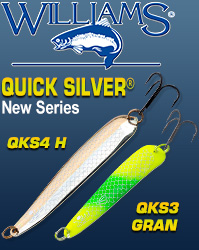Big Eau Pleine fish kill not as severe as expected; Rebuilt aeration system helped provide better refuge than in 2009
May 16, 2013
Contact(s): Tom Meronek, 715-359-7582
WAUSAU – A fishkill on the Big Eau Pleine Reservoir earlier this spring reduced walleye numbers significantly but was not as severe as expected given extremely low oxygen levels at the time, a recent survey of the reservoir’s fish populations shows.
The May 7 survey also showed that the re-built aeration system operating in the reservoir helped save fish by providing a refuge, and that the walleye population should be able to recover, said Tom Meronek, Department of Natural Resources fisheries biologist.
Meronek says the survey results provided more confirmation that the aeration system, rebuilt in 2010, appeared to function well and did help save fish by providing a better refuge than was available in 2009. Angler reports also indicated that the aeration system helped; dead or dying fish were never recorded in the aeration zone in 2013, and anglers were still catching fish slightly downstream from the aeration zone until the ice-out.
Meronek and other DNR fisheries and water quality staff worried back in February and March that the reservoir was headed for a severe fish kill due to oxygen levels that were much lower than in 2009 when the last severe fish kill occurred, given low water levels.
Large numbers of dead fish could be seen on the shorelines after the ice melted. Meronek and other DNR fisheries staff conducted an electrofishing survey on May 7 to assess the severity of the fish kill.
The DNR crew used boats equipped with probes to deliver an electric current to stun fish long enough for them to be netted, counted and measured before being returned to the water. DNR’s May 7 survey found walleye, and other species present as well, including northern pike, black crappie and muskellunge, Meronek said.
Survey results showed the walleye population is down significantly. The 2013 catch rate was 36 fish per hour, compared to 144 fish per hour at the same spot in spring 2012, and 56 fish per hour in 2011, when the fishery was recovering from the 2009 fish kill, Meronek says.
“The good news for anglers is that even with the lower catch rates, it appears the reservoir can recover, based on our experience in 2009,” he said.
Many 1-year-old walleye survived the 2009 fish kill, and that age group is now 5 years old, is large in number, and will contribute to the overall walleye fishery’s recovery from the 2013 fish kill, Meronek said.









